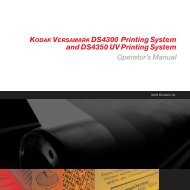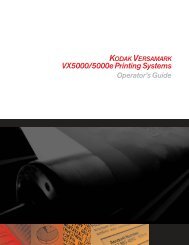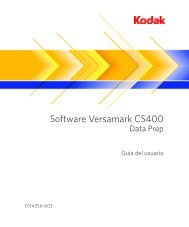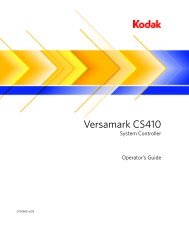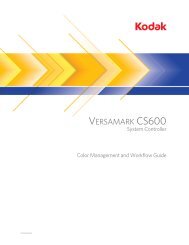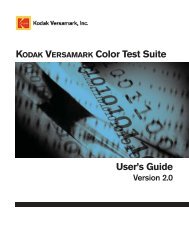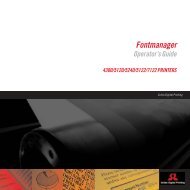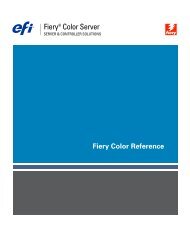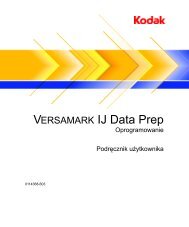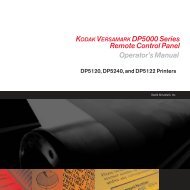You also want an ePaper? Increase the reach of your titles
YUMPU automatically turns print PDFs into web optimized ePapers that Google loves.
Chapter 4. Record Formats<br />
Set Logical Function (SLF)<br />
Set Logical Function (SLF)<br />
The SLF record sets the logical function to be used when an image is<br />
written to the page buffer in an area where another image already exists.<br />
The logical function determines how new dots are combined with existing<br />
dots.<br />
Byte Position Bytes Field Name Description<br />
The effects of the logical function apply only to character dots, not to any<br />
spacing defined for the font. Data that is written into a previously unused<br />
area of the page buffer will be combined with the existing 0 bits according<br />
to the current logical function. Data generated by BOX and IBM records is<br />
also affected by the logical function.<br />
Space characters are processed according to the current logical function<br />
just like any other character. Only spaces actually present in the SFI, IML,<br />
or SIL records are processed. Spaces are not generated at the end of a<br />
line to extend to the page limit. Trailing spaces present in SFI, IML, or SIL<br />
records could overlay existing data.<br />
The SPC record moves the cursor to the desired vertical position. The<br />
buffer area skipped over is not changed, and therefore the logical function<br />
does not affect the result of an SPC record.<br />
Characters are rectangular images. The logical functions apply to the<br />
entire area of the rectangle, not just to the black dots of the character.<br />
Before the first SLF record in each document occurs, the default logical<br />
function is OR.<br />
1-2 2 Record Length The length of this record, in binary, including the record length<br />
field. For example, hex 00 05 specifies a record length of 5 bytes.<br />
3 1 Cyclic Record Count A binary cyclic record count using modulo 256. Each record in the<br />
job is counted, starting with hex 01 for the first record. The 255th<br />
record is hex FF and the 256th record is hex 00. This count is used<br />
to verify record sequence.<br />
4 1 Control Code A binary code that identifies the record type. A value of hex 28<br />
identifies the SLF record.<br />
5 1 Function A binary value that specifies the logical function to be used. The<br />
range is 0-7 with each value having the following meaning, where<br />
X is the existing value of the dot and Y is the new value.<br />
00-REPLACE (Y)<br />
01-OR (X ∨ Y)<br />
02-AND (X ∧ Y)<br />
03-EXCLUSIVE OR (X _ Y)<br />
04-REPLACE NOT (Replace by “Ones complement”) (-Y)<br />
05-OR NOT [X ∨ (-Y)]<br />
06-AND NOT [X ∧ (-Y)]<br />
07-EXCLUSIVE OR NOT [X _ (-Y)]<br />
With category II fonts, character bounding boxes may overlap other<br />
characters in the same line. When using such fonts, you should be<br />
especially careful not to use a logical function that would cause some<br />
characters to destroy parts of other characters. In general, the logical<br />
functions that are “safe” are 01, 03, and possibly 06.<br />
Reference Guide 4 - 49



